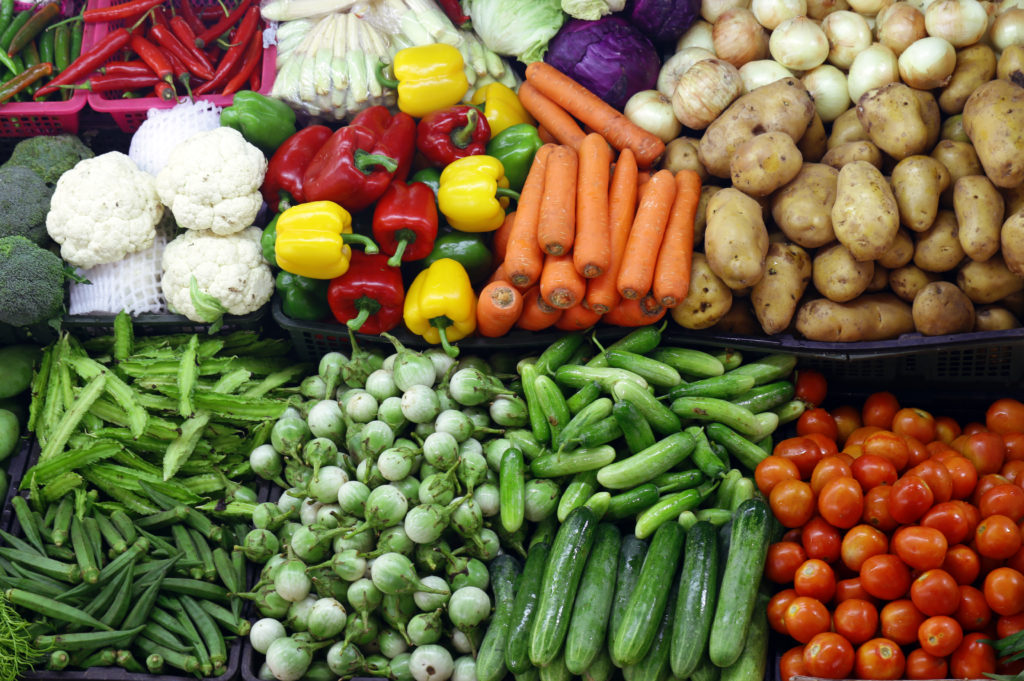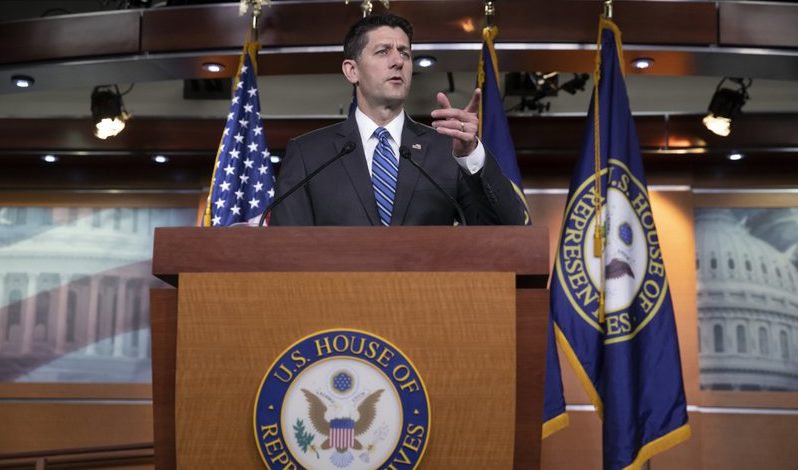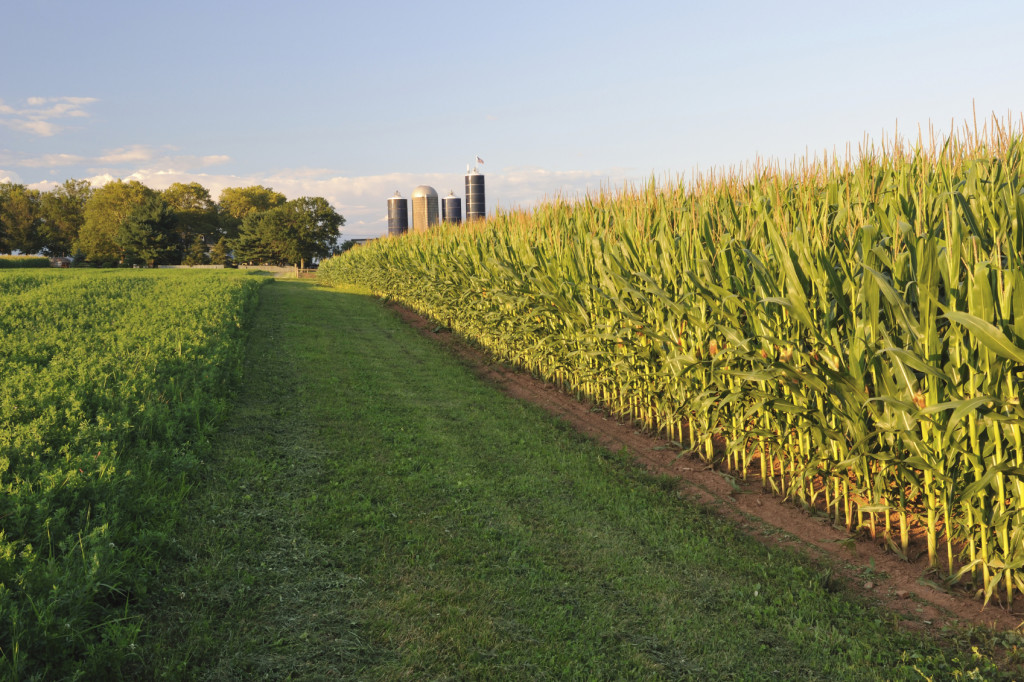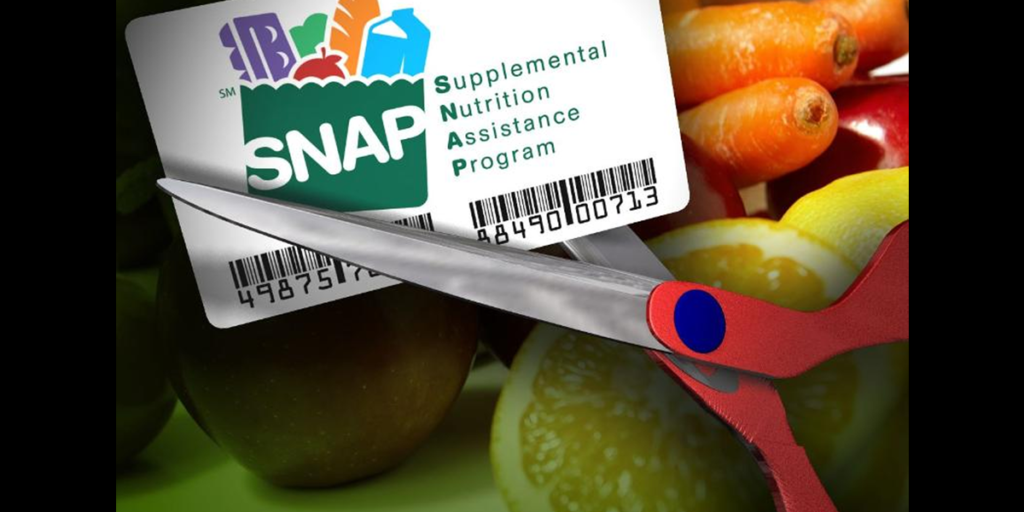2023 could see highest number of people on food stamps since 2016

By Shirleen Guerra | The Center Square (The Center Square) – The 2023 fiscal year is on track to average the highest number of individuals on food stamps in the U.S. since 2016. There were 42,329,101 on food assistance on average each month on through the first nine months of the fiscal year, as of June 2023, according to the U.S. Department of Agriculture. The fiscal year is completed at the end of September. That’s the most people on food assistance since the fiscal year 2016 monthly average of 44,219,363. The fiscal year 2023 overall cost of the Supplemental Nutrition Assistance Program, formerly known as food stamps, will be the first time in two years that emergency pandemic relief was not included the full year. Most states dropped the extra COVID-19 stipend by March 2023. In 2016, the yearly cost of the Supplemental Nutrition Assistance Program was $66.5 billion, or $84.2 billion when adjusted for inflation. Through the first three quarters of fiscal year 2023, the costs are $85.1 billion, which projects to $113.5 billion for the full year. In fiscal year 2022, the SNAP program cost almost $114 billion. Republished with the permission of The Center Square.
Food stamp benefits to increase by more than 25% in October

President Joe Biden’s administration has approved a significant and permanent increase in the levels of food aid available to needy families — the largest single increase in the program’s history. Starting in October, average benefits for food stamps — officially known as the Supplemental Nutrition Assistance Program, or SNAP — will rise more than 25 percent above pre-pandemic levels. The increased assistance will be available indefinitely to all 42 million SNAP beneficiaries. The increase coincides with the end of a 15 percent boost in SNAP benefits that was ordered as a pandemic protection measure. That benefit expires at the end of September. Agriculture Secretary Tom Vilsack said that with the change, the U.S. “will do a better job of providing healthy food for low-income families.” The aid boost is being packaged as a major revision to the USDA’s Thrifty Food Plan, which estimates the cost to purchase groceries for a family of four and guides the way the government calculates benefits. In practical terms, the average monthly per-person benefits for qualified recipients will rise from $121 to $157. The increase is projected to cost an additional $20 billion per year, but it won’t have to be approved by Congress. A farm law passed in 2018 by the then-GOP led Congress and signed by former President Donald Trump already directed the department to reassess the Thrifty Food Plan. “Whether you’re a Republican or a Democrat, I think there’s a shared understanding of the importance of this program,” Vilsack said in a conference call with reporters. The increase is part of a multi-pronged Biden administration effort to strengthen the country’s social safety net. Poverty and food security activists maintain that longstanding inadequacies were laid bare by the COVID-19 pandemic, presenting an opportunity to make generational improvements that reach beyond the current public health crisis. Activists say the previous levels of pre-pandemic SNAP assistance simply weren’t enough, forcing many households to choose cheaper, less nutritious options or simply go hungry as the funds ran low toward the end of the month. Vilsack said the increased funding will allow families to “be able to make healthy choices” all month long. The move was swiftly praised by food security and anti-poverty activists. Joel Berg, CEO of Hunger Free America, called it “a huge victory in the fight against hunger and for the tens of millions of Americans facing food insecurity.” The measure also drew praise from some Republicans. “It will allow families to purchase nutritious foods, which is important to promote health and reduce diet-related chronic conditions,” said Ann Veneman, who served as agriculture secretary under former President George W. Bush, in a statement on behalf of the Bipartisan Policy Council. The changes are not directly connected to the COVID-19 pandemic, but Vilsack said the crisis helped underscore the importance of the food assistance program. “A lot of people who thought they’d never take part in the SNAP program found themselves in need,” he said. “The pandemic sort of shocked people out of the belief that this was a program for someone else.” Republished with permission of the Associated Press.
Carol Gundlach: Protect SNAP to help thousands of Alabama veterans make ends meet

Alabamians, like all Americans, take time on Veterans Day each year to honor those who have served our country and sacrificed to keep all of us free. But we should treat this holiday as more than a chance to say “thank you.” It also should be an occasion to reflect on our national obligation to provide veterans with the services and support they need to return to civilian life with dignity and security. The unfortunate reality is that many people who served in our military struggle with hunger after they return home. About 26,000 Alabama veterans, or 8 percent of all veterans in the state, use the Supplemental Nutrition Assistance Program (SNAP) to help feed themselves and their families, according to a new study released Thursday by the Center on Budget and Policy Priorities, a nonprofit research organization based in Washington, D.C. Nationally, nearly 1.4 million veterans, representing 7 percent of all American veterans, receive assistance through SNAP, also known as food stamps. SNAP is an essential tool to help these veterans feed their families, just as it fights hunger for tens of millions of other Americans. But a U.S. House proposal threatens to take this vital food assistance away from as many as 2 million people, including tens of thousands in Alabama. The U.S. House and Senate have passed conflicting versions of the Farm Bill, the legislation that authorizes SNAP. The House version, for which six of Alabama’s seven House members voted, would impose harmful new SNAP “work requirements” that would take food away from many hungry families while doing little or nothing to help them find or keep work. Fortunately, the bipartisan Senate bill – with support from Sens. Doug Jones and Richard Shelby – offers a better path. Unlike the House approach of creating punitive new barriers to SNAP, the Senate plan would strengthen core SNAP assistance. The Senate proposal also would make needed investments in employment and training services for seniors, homeless people, people with disabilities and other SNAP participants who face additional barriers to work. Now the House and Senate must reconcile the differences between the two Farm Bills. Congress faces a choice between helping and hurting hungry people, including the veterans who could be devastated by the House version. Veterans face many barriers as they re-enter the civilian labor force. Trying to find a civilian job while still in the military can be difficult, and veterans who come home with disabilities may face additional barriers to employment. SNAP is an especially critical lifeline for families including veterans with disabilities, which are more likely to struggle to put food on the table. Young male veterans have higher rates of unemployment than do similarly situated civilian workers. While the U.S. Department of Veterans Affairs (VA) has programs to help these veterans gain skills and find stable employment, the VA programs are not necessarily aligned with the rigid one-size-fits-all work requirements proposed in the House Farm Bill. Should the House plan become law, many veterans would have to choose between getting the job help offered by the VA and keeping SNAP food assistance. This Veterans Day, we should thank Alabama veterans for their service by supporting SNAP, a program that helps thousands of them put food on the table. We also should urge our members of Congress to pass a final Farm Bill with the Senate’s SNAP provisions. By protecting and strengthening SNAP, Congress can take an important step toward ensuring that no veteran goes hungry after serving our country. ••• Carol Gundlach is a policy analyst for Alabama Arise, a nonprofit, nonpartisan coalition of congregations, organizations and individuals promoting public policies to improve the lives of low-income Alabamians. Email: carol@alarise.org.
Conservative revolt over immigration sinks House farm bill

In an embarrassment for House Republican leaders, conservatives on Friday scuttled a bill that combines stricter work and job training requirements for food stamp recipients with a renewal of farm subsidies popular in GOP-leaning farm country. Hard-right conservatives upset over the party’s stalled immigration agenda opposed the measure, which failed by a 213-198 vote. Some 30 Republicans joined with every chamber Democrat in opposition. The vote was a blow to GOP leaders, who had hoped to tout its new work requirements for recipients of food stamps. The work initiative polls well with voters, especially those in the GOP political base. More broadly, it exposed fissures within the party in the months before the midterm elections, and the Freedom Caucus tactics rubbed many rank-and-file Republicans the wrong way. “You judge each piece of legislation on its own,” said Rep. Tom Cole, R-Okla. “You don’t hold one thing hostage for something that’s totally different and has nothing to do with it. I would say that’s a mistake in my view.” Key conservatives in the rebellious House Freedom Caucus opposed the measure, seeking leverage to win conservative policies an advantage in a debate on immigration next month. Negotiations with GOP leaders Friday morning failed to bear fruit, however, and the unrelated food and farm measure was defeated. Conservative Rep. Jim Jordan, R-Ohio, said some members had concerns over the farm bill, but said, “That wasn’t my main focus. My main focus was making sure we do immigration policy right” and “actually build a border security wall.” House Speaker Paul Ryan, R-Wis., took steps to call for a re-vote in the future but it’s not clear when the measure might be revived. A handful of GOP moderates opposed the bill, too, but not enough to sink it on their own. The farm bill, a twice-per-decade rite on Capitol Hill, promises greater job training opportunities for recipients of food stamps, a top priority for House leaders. Democrats are strongly opposed, saying the stricter work and job training rules are poorly designed and would drive 2 million people off of food stamps. They took a victory lap after the vote. “On a bipartisan basis, the House rejected a bad bill that failed farmers and working families,” said Minority Leader Nancy Pelosi, D-Calif. “Republicans wrote a cruel, destructive Farm Bill that abandoned farmers and producers amid plummeting farm prices and the self-inflicted damage of President Trump’s trade brinkmanship.” Currently, adults 18-59 are required to work part-time to receive food stamps, officially called the Supplemental Nutrition Assistance Program, or agree to accept a job if they’re offered one. Stricter rules apply to able-bodied adults 18-49, who are subject to a three-month limit of benefits unless they meet a work or job training requirement of 80 hours per month. Under the new bill, the tougher requirement would be expanded to apply to all adults on SNAP, with exceptions for of seniors, pregnant women, caretakers of children under the age of 6, or people with disabilities. “It sets up a system for SNAP recipients where if you are able to work, you should work to get the benefits,” said Ryan, R-Wis.” And if you can’t work, we’ll help you get the training you need. We will help you get the skills you need to get an opportunity.” The measure would have greatly expanded funding for state-administered job training programs, but Democrats and outside critics say the funding for the proposed additional job training would require huge new bureaucracies, extensive record-keeping requirements, and that the funding levels would fall far short of what’s enough to provide job training to everybody covered by the new job training requirements. “While I agree that there are changes that need to be made to the SNAP program, this is so clearly not the way to do it,” said Rep. Colin Peterson of Minnesota, top Democrat of the Agriculture Committee. “The bill cuts more than $23 billion in SNAP benefits and will result in an estimated 2 million Americans unable to get the help they need.” He said it “turns around and wastes billions … cut from SNAP benefits to create a massive, untested workforce training bureaucracy.” In addition to food stamps, the measure would renew farm safety-net programs such as subsidies for crop insurance, farm credit and land conservation. Those subsidies for farm country traditionally form the backbone of support for the measure among Republicans, while urban Democrats support food aid for the poor. On Thursday, supporters of the agriculture safety net easily defeated an attempt to weaken the government’s sugar program, which critics say gouges consumers by propping up sugar prices. The measure mostly tinkered with farm programs, adding provisions aimed at boosting high-speed internet access in rural areas, assist beginning farmers, and ease regulations on producers. But since the measure makes mostly modest adjustments to farm policy, some lawmakers believe that the most likely course of action this year is a temporary extension of the current measure, which expires at the end of September. In the Senate, the chamber’s filibuster rules require a bipartisan process for a bill to pass. There, Agriculture Committee Chairman Pat Roberts, R-Kan., promises a competing bill later this month and he’s signaling that its changes to food stamps would be far more modest than the House measure. Republished with permission from the Associated Press.
Here are the top 10 ways the proposed 2018 Farm Bill will affect Alabama

Alabama is home to a $70 billion agriculture economy, which is why the Agriculture and Nutrition Act of 2018, H.R. 2, better known as the “Farm bill” is particularly important for Yellowhammer State farmers. The bill is headed for a vote on Friday by the U.S. House of Representatives. Already, some Alabama representatives are speaking out in support of the bill, but if passed, how will it really affect the Yellowhammer State? Alabama 3rd District U.S. Rep. Mike Rogers, the only Alabama member of the House Committee On Agriculture, issued a statement on Thursday explaining how the bill will affect Alabama’s many farmers. “The truth is that the agriculture industry makes up over 40 percent of the economy in the State of Alabama,” said Rogers. “Every five years, Congress has to renew the Farm Bill and the policies that are critical to setting the guidelines for our farmers and producers.” Rogers continued to say that the Farm Bill will reform the Supplemental Nutrition Assistance Program (SNAP) by encouraging individuals to get work or free training to help pull themselves out of poverty; a condition that will only apply to able-bodied adults. The bill will also help bring higher quality broadband service to rural areas in the State by incentivizing providers. “I was also pleased my amendment was included, the SNAP Vitamin and Mineral Improvement Act,” Rogers said. “It would allow low-income Americans to purchase a daily multivitamin-mineral supplement with their SNAP benefits to make sure they are getting their daily nutrients and add choices to SNAP while not changing the costs.” Top 10 ways the 2018 Farm Bill affects Alabama: Farm policy: ARC and PLC. The bill reauthorizes and strengthens the Agriculture Risk Coverage (ARC) and Price Loss Coverage (PLC) options through 2023. Producers are given an opportunity to make a new election between ARC and PLC with several improvements, including allowing a new yield update opportunity for producers who were facing severe drought during the previous yield update, allowing reference prices to adjust to improved market conditions, and prioritizing the use of RMA data for administering ARC to minimize disparities between counties. Nutrition. Over 35 improvements are made to the Supplemental Nutrition Assistance Program (SNAP), the nation’s flagship nutrition program. Most notably, existing work requirements are strengthened, streamlined and paired with a variety of options to increase opportunities for SNAP recipients, including participating in a fully-funded, guaranteed Employment & Training (E&T) slot. Individuals may choose not to participate, but they will no longer be eligible for SNAP. The Farm Bill would not kick 1,000,000 SNAP recipients off the program: Anyone who would leave the program would do so because they have obtained employment with sufficient income and are no longer be eligible or they choose not to work or participate in a work or training program for at least 20 hours per week. No one would be kicked off SNAP due to a mandatory work requirement. The bill would not enforce work requirements on the disabled, the elderly, expectant mothers, caretakers of children or children: Any able-bodied adult on government assistance should be working at least 20 hours per week. SNAP is a tool to bring individuals and families out of poverty using the work requirements and training program. Dairy policy. The Margin Protection Program is renamed the Dairy Risk Management (DRM) program. The first 5 million pounds of milk production on a dairy is made eligible for higher coverage levels at lower premiums. Milk production not covered under DRM is made fully eligible for a comparable crop insurance policy. Finally, feed costs are studied to ensure accuracy in the DRM, and class I milk calculations are adjusted to help dairy farmers better manage risk in the futures market. Trade. Given escalating use of illegal trade actions by foreign countries, the farm bill stands by Alabama’s farmers and ranchers, providing a strengthened safety net and authorizing and restoring funding for vital tools for trade promotion and market development. The farm bill also maintains long-standing legal authority for the secretary to provide assistance to farmers and ranchers affected by unfair foreign trading practices. Establishes an International Market Development Program. Maintains and strengthens the program purposes of the Market Access Program (MAP), the Foreign Market Development (FMD) Program, the Technical Assistance for Specialty Crops (TASC) Program, and the Emerging Markets Program (EMP), bringing these initiatives under the single umbrella of a $255 million per year International Market Development Program, with no less than $200 million for MAP, no less than $34.5 million for FMD, $10 million for EMP, and $9 million for TASC. Conservation. The farm bill prioritizes working-lands conservation by retaining and folding the best features of the Conservation Stewardship Program (CSP) into the nation’s flagship incentive-based program for voluntary conservation—the Environmental Quality Incentives Program (EQIP). This supports and enables a significant investment in emerging conservation practices like the use of cover crops Crop insurance. At the request of virtually every farmer, rural banker and rural business in the country, the farm bill enhances and protects crop insurance. According to the Ag Committee, “some improvements are made but, overall, the farm bill doesn’t fix what isn’t broken.” Rural development. Rural areas of Alabama lack the same access to broadband and infrastructure that urban areas do. The bill authorizes substantial annual appropriations for rural broadband and requires USDA to establish forward-looking broadband standards. The farm bill also strengthens the suite of rural development initiatives to promote jobs and economic activity in rural Alabama where employment is suffering due to the sharp downturn in the farm economy. Tackling the opioid crisis. Provides the secretary the authority to prioritize projects that help communities meet the challenges of the opioid crisis. Funds projects that provide access to telehealth services and build medical facilities in rural communities. It also provides a 33 percent ($25,000,000) increase in authorized funding for critical telehealth grants under the distance Learning and Telehealth Program. Beginning farmers and ranchers. The bill maintains several provisions to help beginning farmers and ranchers establish themselves in agriculture. The bill establishes a scholarship program at
Carol Gundlach: Congress should oppose Farm Bill changes that would make Alabamians poorer, hungrier

Americans across the political spectrum have long agreed on the importance of reducing hunger in our country. But the U.S. House is now considering a Farm Bill reauthorization that would do the opposite. It would be a step in the wrong direction for children, seniors and struggling families across Alabama. The Supplemental Nutrition Assistance Program (SNAP) is a proven success with a long history of bipartisan support and a strong track record of reducing hunger, creating jobs and supplementing wages. But the proposed Farm Bill would erode our shared commitment to fighting hunger. Instead, it would punish people who have very low incomes by slashing SNAP for as many as 2 million Americans, including tens of thousands Alabama adults and their children. This misguided move would increase hunger, deepen poverty and take a heavy toll on our state’s economy and budgets. The cuts would hit especially hard in rural communities, where some stores would close without SNAP income. SNAP, often called food stamps, is the largest program in the Farm Bill. It helps more than 40 million Americans make ends meet and has lifted more than 8 million families out of poverty, including 195,000 Alabamians. In Alabama alone, SNAP benefits are spent in more than 5,000 stores and contribute $1.3 billion a year to the state economy. With Alabama’s General Fund already struggling to pay for essential services like health care and prisons, the House plan would force the state to hire more SNAP eligibility workers and create expensive systems to track compliance with new work and child support mandates. It also would force Alabama to return to the costly, ineffective practice of verifying whether applicants have cars or other assets that might make them ineligible for SNAP. The Farm Bill seeks to solve a problem that doesn’t exist. Half of all adult SNAP participants without a disability are working, as are 60 percent of participants with children – often in retail, construction and other jobs with low wages, irregular or seasonal hours, and few benefits. In exchange for cutting their nutrition assistance, the House plan would create an underfunded employment and training system that would do little to help people actually find good-paying jobs. The bill also would extend these stricter requirements to people who are now exempt. That would include nearly all participants with children ages 6 and over, as well as jobless Alabamians in their 50s – even though they often remain unemployed longer than younger people do, no matter how hard they look for work. Participants who cannot prove they have worked enough hours could be denied SNAP for one year or longer. These proposed SNAP changes would hurt children, too. When parents lose food assistance because they can’t find a job or their work hours drop below an arbitrary minimum, their children are deprived of nutrition they need to grow and thrive. That makes it harder for children to succeed in school – and it’s simply cruel. Another way the plan could hurt kids is by requiring single parents to “cooperate” with child support collection. Child support is critical to eliminating child poverty, and more than 70 percent of low-income custodial parents already receive child support services. But taking food off the table doesn’t help a parent pay child support; it only makes the family hungrier. The proposal also could put applicants who are victims of domestic violence or child abuse at greater risk, along with costing Alabama millions of dollars for additional child support administration. Alabama’s congressional delegation will play an important role in Farm Bill reauthorization. Our representatives will vote on the plan when it reaches the House floor as soon as mid-May. Sen. Richard Shelby is the influential new chairman of the Senate Appropriations Committee. And Sen. Doug Jones is an important member of a bipartisan group of Senate moderates, some of whom are expected to offer their own version of the Farm Bill in the next few weeks. Alabamians are caring people, and we have a shared responsibility to keep our neighbors from going hungry. As our state’s members of Congress consider the Farm Bill, we urge them to oppose any efforts to weaken SNAP’s ability to help struggling Alabama families keep food on the table. ••• Carol Gundlach is a policy analyst for Alabama Arise, a nonprofit, nonpartisan coalition of congregations, organizations and individuals promoting public policies to improve the lives of low-income Alabamians. Email: carol@alarise.org.
New study reveals SNAP benefits don’t cover meal cost in Alabama

The Supplemental Nutrition Assistance Program (SNAP) provides monthly food budget assistance to more than 42 million eligible, low-income Americans across the country. The Urban Institute, a liberal-leaning think tank, released a the study — How Far Do SNAP Benefits Fall Short of Covering the Cost of a Meal? — on Friday that shows meals in Alabama cost more than SNAP benefits allow — ranging from 10 percent more in Colbert County to 43 percent more per meal in Baldwin County. On a monthly basis, SNAP benefits fall short of the cost of an average meal by $46.50 per person nationwide. But according to a new study, even the maximum SNAP benefit does not cover the cost of an average meal in any of Alabama’s 67 counties. Barry Spear, public information manager for Alabama’s Department of Human Resources (ADHR), which administers SNAP, told The Associated Press that SNAP only meant to meet supplemental food needs. “It’s not the only source that they have to find food,” Spear said. “A lot of people think it’s supposed to take care of all their needs, and it’s not designed to do that.” He said individuals can join other federal programs like WIC, which gives aid to women and children, or go to food banks run by nonprofit organizations or churches. According to government records, more than 850,000 Alabamians, or 1 in 6 residents, received SNAP benefits for the entirety of 2016 (the last year the numbers are available).
Alabama residents join pet food stamp fight

A viral new petition is asking the federal government to extend food stamp benefits to pet food, and Alabamians are getting in on the action. Edward B Johnston Jr. is petitioning the Food and Nutrition Service – U.S. Department of Agriculture to extend Supplemental Nutrition Assistance Program (SNAP) benefits (formerly known as food stamps) to pets. He said he has personally only been receiving SNAP benefits for a few months, but has been unable to feed his dog due to the government regulations — hence the need for the petition. Under the Food and Nutrition Act of 2008, households cannot use benefits to buy pet food, according to the USDA. The Care2 petition, called “Don’t Let Pets Starve – Include Pet Food in SNAP Benefits!,” has already reached more than 101,000 signature, past its 90,000 goal. The petition reads: “Each year, over 40 million low- or no-income people in the United States rely on the Supplemental Nutrition Assistance Program (SNAP) to help purchase food for themselves and their families. It is the most wide-reaching program in the domestic hunger safety net, helping keep millions of families from starving. But what about their pets? Unfortunately, SNAP benefits cannot be used to buy pet food, leaving poor families with pets in a difficult position. “ The petition also argues a family’s financial status can change at any moment, so pet owners should not be forced to give up their animals simply just because they can’t afford them. “Should someone be forced to give up a pet they’ve had for years just because they hit a financial rough patch?” the petition reads. Alabama’s Austyn P. agrees. “Pets are just as important as children and people!!! They have feelings and get hungry to!!! I think this is a great thing!!” she wrote. Other Alabamians who have commented on the petition said they treat their pets as children and that they also deserve to eat. “My dogs are a part of my family not only do I treat them as my children but I cook most of their meals which means rather than buy enough for just myself I have to buy enough for them as well, two extra mouth to feed,” posted Alabama signer Kimberly K. “Because every life deserves to have food,” said Alabama supporter Betty T. Meanwhile other Alabamians aren’t so keen on the idea. “This has got to be a joke…Animals on Food Stamps. If this is proposed, this entity will be very embarrassed,” posted one Alabama signer.
GOP House member pre-files bill to nix waivers for able-bodied SNAP work requirements

On Alabama state rep is working to get more able-bodied Alabamians off of the government rolls and back to work. Ahead of the 2018 Legislative session, State Rep. Tommy Hanes (R-Bryant) pre-filed HB6, which prohibits the Alabama Commissioner of the Department of Human Resources from requesting a waiver of federal work requirements for able-bodied adults without dependents who are applicants or recipients of the Supplemental Nutrition Assistance Program (SNAP) formerly known as food stamps. In 2009, the Obama administration passed a stimulus bill that allowed states to apply for waivers from regulations requiring able-bodied adults without dependents to work. Throughout former President Barack Obama‘s tenure, food stamp usage soared. In 2017, Alabama implemented laws requiring food stamp recipients work at least 20 hours per week, enroll in school, or take part in state-approved job training if they receive benefits for more than three months. Turns out the work requirements worked and the state saw large decreases in SNAP enrollment as a result of the work requirements. According to National Review, after Alabama reinstated food-stamp work requirements for able-bodied adults without dependents, the rolls dropped by 85 percent. Now, Hanes is looking to drop the ability to ask for waivers, to require all SNAP recipients, who don’t have dependents, to meet work requirements to continue to receive benefits — which will hopefully encourage more Alabamians to go back to work. This bill requires all able-bodied adults without dependents who are applicants or recipients of SNAP benefits to participate in minimum work requirements, provide documentation of engaging in work training, or participate in volunteer community service and would provide limited exemptions from these work requirements. If passed, it will become effective on the first day of the third month following its passage and approval by Governor Kay Ivey.
Donald Trump’s food stamp cuts face hard sell in Congress

President Donald Trump‘s proposal to slash food stamps by a third will be a hard sell in Congress, even as Republicans have tried repeatedly to scale back the program’s $70 billion annual cost. Democrats will oppose any changes to the program, which is designed as a temporary safety net for Americans who find themselves unable to adequately feed themselves or their families. Many Republicans, too, have been wary to overhaul food stamps, even as participation has more than doubled. Trump’s proposal could have a disproportionate effect on Republican-leaning states – seven of the 10 states with the highest food stamp participation supported Trump. Republicans are still eying cuts to the program, but none as large as what Trump has proposed. — WHAT TRUMP IS PROPOSING Known as the Supplemental Nutrition Assistance Program, or SNAP, the program now serves 44 million people and cost $70 billion last year. The program more than doubled in cost during the recession, and after some eligibility rules were expanded. The cost has stayed higher even as the economy has recovered, though it has slowly decreased annually. Trump’s proposed budget would save $191 billion over 10 years by shifting some of the cost to states, targeting the benefits to the poorest people, increasing work requirements and limiting some eligibility. It would also allow states to determine the level of SNAP benefits they provide. States now administer SNAP with federal money, but would have to come up with an average of 10 percent of the cost by 2020 and 25 percent by 2023. Mick Mulvaney, Trump’s budget director, said shifting costs to states would give them “a little bit of skin the game” and incentivize them to improve the programs. — WHY IT’S A LONG SHOT Congress is unlikely to approve such deep cuts in the program, since it affects constituents so broadly. And farm-state lawmakers who have jurisdiction over SNAP have generally sought to preserve it, as food stamps help them win urban Democratic votes for the massive farm bill that Congress passes every five years or so. “It’s important to note, #SNAP plays a crucial role in protecting our most vulnerable citizens who’ve fallen on tough times,” tweeted House Agriculture Chairman Mike Conaway, R-Texas, after the budget was released. Still, Conaway and Senate Agriculture Chairman Pat Roberts, R-Kan., have indicated they will support some sort of SNAP overhaul in the next farm bill, due next year. “We need to take a look at our nutrition assistance programs to ensure that they are helping the most vulnerable in our society,” Conaway and Roberts said in a joint statement on the budget. It won’t be easy. The bill would need 60 votes in the Senate, and Democrats have strongly opposed any changes to the program. Republican leaders insisted on food stamp cuts in the 2014 farm bill, and the House passed legislation that would have strengthened work requirements and cut 5 percent. After negotiations with the Senate, the cut was reduced to an almost-negligible 1 percent that only affected a handful of states. Similarly, in the mid-1990s, some in the GOP pushed for a major food stamp overhaul as part of welfare reform, and some work requirements were added. But the program stayed largely intact. — WHOM THE CUTS WOULD AFFECT While a majority of SNAP recipients are in urban areas, there has been an increase in rural areas. Of the 10 states that have the most food stamp recipients, seven went Republican in the 2016 presidential election – Florida, Georgia, Michigan, North Carolina, Ohio, Pennsylvania and Texas. In a list compiled by the liberal-leaning Center on Budget and Policy Priorities, three states among those that have the highest percentage of recipients are strongly Republican – Louisiana, Mississippi and West Virginia. One of Trump’s proposals would limit government waivers that have allowed able-bodied adults who don’t have dependents to receive food stamps indefinitely without finding work. The Trump administration says this would help move people off the rolls. “If you’re on food stamps, and you’re able-bodied, we need you to go to work,” Mulvaney said. Lucy Melcher of the anti-hunger group Share Our Strength says some people aren’t able to find work in their areas, and have no access to job training. She says the cuts could be “devastating.” The proposed cuts would “just exacerbate poverty for people who are already trying to work their way out of it,” Melcher said. “I don’t think there’s a person living in poverty today who wouldn’t be affected by this budget.” Republished with permission of The Associated Press.
Mike Rogers: Agriculture and East Alabama

As most folks across East Alabama know, the agriculture industry is a money maker and job creator in our state. The agriculture industry boasts over 500,000 jobs and brings in more than $70 billion total a year to Alabama. Because of this, I know firsthand how important agriculture is to all of us. As a senior member on the House Agriculture Committee, I make it a priority each year to hear back from folks across the state so I can best represent them in Congress. Since I was first elected, I have held meetings with the Third Congressional District Agriculture Advisory Committee, which is made up of farmers and producers from each of the 13 counties that make up the district. When I am in Washington, I meet regularly with agriculture groups from Alabama about issues important to them. Just in the past few months, I have met with Golden Flake Snack Foods and George Atwood, an egg producer from Alexandria, Alabama, about GMO labeling standards. I met with representatives from the Southern Crop Production Association on issues important to their organization. I also met with the Alabama Cattlemen’s Association regarding the overreaching EPA and trade issues important to them as well as the American Association of Crop Insurers about President Obama’s dangerous proposed cuts to crop insurance in his budget. In May, I attended an Agriculture Full Committee Hearing titled, “Past, Present and Future of SNAP: The Retailer Perspective.” Opelika’s own Jimmy Wright, owner of Wright’s Market, testified at that hearing. This year I supported H.Res. 591, which commends cooperative owners and employees of the Farm Credit System, which was signed into law through the Farm Loan Act of 1916, for their continued service in meeting the credit and financial services needs of rural communities and agriculture. Today, the Farm Credit System plays a vital role in the success of rural communities in all 50 states and provides over $237 billion in loans to more than 500,000 customers. I also signed onto to letters that are important to our state’s agriculture industry. One was a letter to House Leadership opposing a Senate Resolution of disapproval of the Catfish Rule. The catfish inspection rule provides important oversight for American consumers when they buy catfish. It guarantees they are buying American-raised, properly inspected catfish. Another was sent to the secretary of the USDA, Tom Vilsack, to express concern regarding the Food and Nutrition Service’s (FNS) recently proposed rule to modify retailer eligibility requirements in the Supplemental Nutrition Assistance Program (SNAP). These are just a few examples of what is going on in Washington when it comes to Alabama’s agriculture industry. I will continue to fight for our hard-working farmers and all individuals in that industry. • • • Mike Rogers is a member of the U.S. Congress representing Alabama’s 3rd Congressional District.
Robert Aderholt-backed bill would allow drug testing for food stamps

A key House Republican is renewing a GOP push to allow drug tests for low-income food stamp recipients, a move to help states like Wisconsin, where Gov. Scott Walker has sued the federal government to permit screening. Alabama Rep. Robert Aderholt unveiled the measure on Thursday as Republicans look to find savings in the program. Aderholt says that states could choose whether they wanted to allow drug testing, so the legislation wouldn’t be a mandate. He says it’s common sense to create drug programs for those who need help. “This is a compassionate way to try and help these people who have issues, instead of turning the head,” said Aderholt, chairman of the House subcommittee that oversees spending for the Agriculture Department, which administers the food stamp program. The bill is designed to aid states like Wisconsin, where former GOP presidential candidate Walker has sought to require food stamp recipients to undergo drug screening. Walker’s administration filed suit against the Agriculture Department, which has said federal law bars the practice. The government says states cannot impose new standards of eligibility under the law, and Agriculture Secretary Tom Vilsack has said drug testing recipients is intrusive and ineffective. The legislation would find savings – and cut benefits for some recipients – by making it harder for people to become automatically eligible for food stamps if they already participate in a federal heating assistance program. Aderholt’s office says the estimated savings are around $1.2 billion, with about half of that awarded to states for drug treatment programs. The food stamp program, now called the Supplemental Nutrition Assistance Program, or SNAP, served more than 46 million Americans and cost $74 billion last year. That’s twice the program’s 2008 cost. Though he has not weighed in on Aderholt’s legislation, House Speaker Paul Ryan, R-Wis., has long said he wants to overhaul the food stamp program, along with other federal assistance for the poor. He has in the past proposed budgets that would convert federal food stamp dollars into block grants for the states, a move that would cut spending for the program. Aderholt says he hopes his legislation is a first step in a larger GOP effort to overhaul the food stamp program. In 2013, House Republican leaders tried unsuccessfully to cut the program by 5 percent annually by passing broad new work requirements as part of a massive farm bill. The bill also included drug testing for recipients. House leaders held up the bill for more than a year, insisting that money for farm programs be paired with significant cuts to food stamps. Democrats balked, and the final bill included a much smaller cut and no allowances for drug testing. That effort was before Republicans won the Senate in 2014. Since then, House Agriculture Chairman Mike Conaway of Texas has led what he calls a comprehensive, multiyear review of the program to see what’s working. He said last year that “either huge reforms or small reforms” could come from that process. Aderholt did not rule out adding his legislation to this year’s agriculture spending bill, which he writes. But he said he will try and move it through Conaway’s committee first. Republished with permission of the Associated Press.


